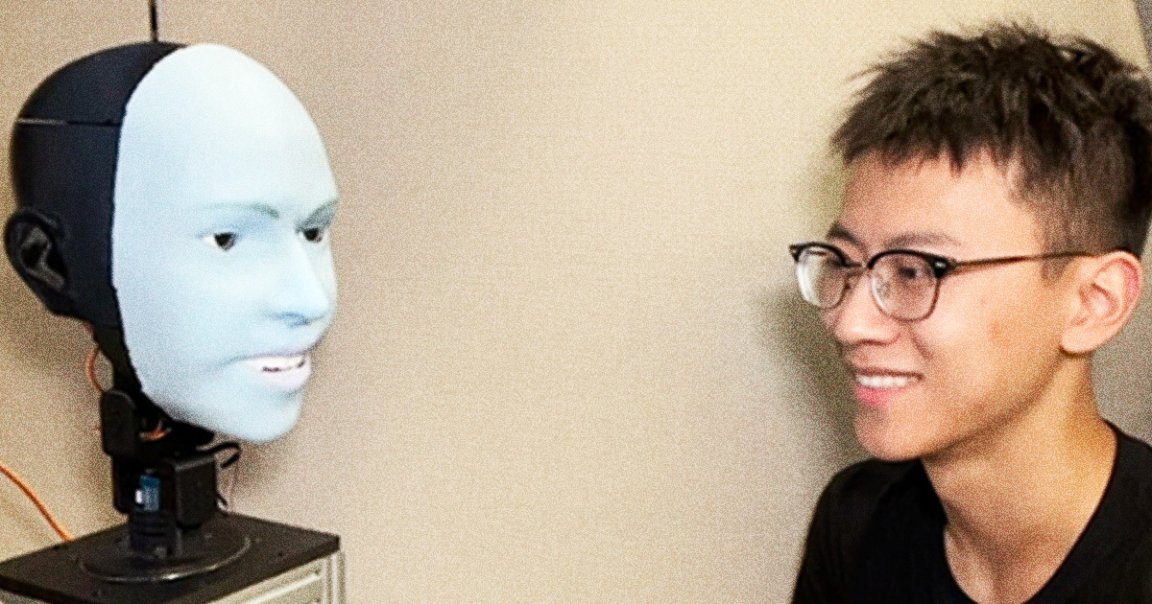
Beaming Bot
Researchers have developed a robot that can anticipate your smile and return it almost instantly. The new work, published as a study in the journal Science Robotics, is intended to help human-looking robots appear more natural. The actual expressions this one makes, however, look anything but.
Named “Emo,” the bot can predict your smile less than a second before it actually appears using cameras lodged into its pupils. Then just as the smile creeps up your face, as shown in an amusing video from New Scientist, Emo grimaces its horrific imitation of one in return, making sure to keep eye contact the entire time.
“I’m a jaded roboticist, but I smile back at this robot,” study coauthor Hod Lipson, at Columbia University, told New Scientist.
Need For Speed
Like it or not, it seems inevitable that we’re all going to have to get comfortable with the idea of interacting with AI powered robots — including humanoid ones.
But while large language models like ChatGPT are good at imitating human speech and holding a conversation, robots are still pretty bad at doing our mannerisms. There’s just something slightly off about them, a phenomenon known as the uncanny valley.
According to the researchers, one of the main reasons why is that their facial expressions don’t respond quickly enough to a human’s. The trick, then, is to get them to happen more or less simultaneously.
“Whereas delayed facial mimicry looks disingenuous, facial coexpression feels more genuine because it requires correct inference of the human’s emotional state for timely execution,” the researchers wrote in the study.
Simulated Smirk
To achieve this, the researchers first had the robot undergo “self modeling.” By performing random facial movements in front of a camera, Emo learned how moving the actuators in its face corresponded to actual facial expressions.
After several hours of that, they then had Emo watch videos of human facial expressions for a few more hours, which is how it learned to predict them.
There’s no arguing that it’s gotten very good at the anticipation part, even if the smiles leave something to be desired. But perhaps once these findings are applied to a more mechanically advanced robot, the machines will be the ones grinning from ear to ear — while we’ll just have to grin and bear it.
“I think predicting human facial expressions accurately is a revolution in [human robot interaction],” study lead author Yuhang Hu, also at Columbia, said in a statement about the work. “In the future, when interacting with a robot, it will observe and interpret your facial expressions, just like a real person.”
More on robots: Robot Dog Shot Three Times During Raid